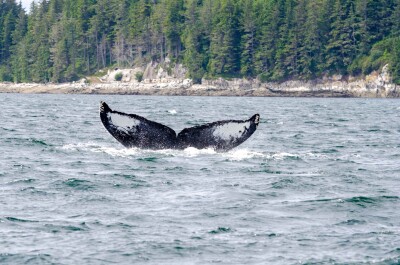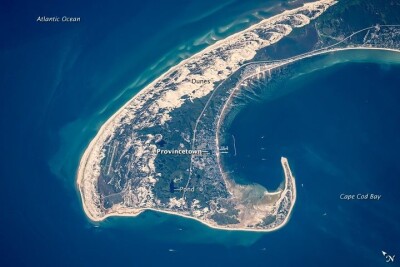Northeast
Fiberglass 44 is built to go offshore; Maine designer scales back to 30 feet
Simmons Boatworks in Friendship, Maine, recently finished off a fiberglass Calvin 44 and now has another Calvin 44 in its shop. Both 44' x 17' hulls came from SW Boatworks in Lamoine, Maine.
The first boat was the Overkill, built for local fisherman Jimmy Wotton who will use her for lobstering, as well as shrimping and scalloping.
Since the Overkill will also be towing a shrimp net or a scallop dredge, Gil Simmons built a very heavy boat.
"All my construction is basically the same. I use no wood. I pretty much double-tied-in everything. Taping in the bulkheads, instead of one or two, I went with three or four. It's a very heavily constructed boat. It was 30,000 pounds on the travel lift," says Simmons.
The deck is 3/4-inch Coosa board, a high-density polyurethane foam reinforced with layers of fiberglass. On the deck's underneath side are three layers of 2408 combo mat and two layers on top. Beneath the deck is a 4' x 8' x 35" fish hold.
All the panels in the boat are Coosa board, though the bulkheads below deck are solid fiberglass.
For power there is a 700-hp Deutz that's matched up with a ZF 360 marine gear with a 2.6:1 reduction that turns a 36" x 44" prop. On sea trials the Overkill hit 24 knots. Hydraulics for fishing run off a clutched PTO on the gearbox.
Simmons notes, "the lobster fishery has kind of moved offshore the last few years. If you want to go there, you've got to have the equipment, and a boat that size has got to have power."
The split wheelhouse extends back 7 feet to provide extra cabin space. "Because he drags, he wanted the room in there," Simmons says. There's a bunk in the wheelhouse, as well as two bunks up forward.
Once the Overkill left Simmons Boatworks, another Calvin 44 hull from SW Boatworks went into the shop to be finished off. This one is for Rex Benner, another Friendship fisherman. She'll have a 700-hp Caterpillar C12 for power.
On a slightly smaller scale, another fiberglass hull from SW Boatworks was finished off on Maine's Beals Island. This was a 30-footer and the first one out of the mold. The J-Lynn Zrae was completed by the boat's designer, Calvin Beal Jr., (who also designed the 44-footers listed above) and a host of other Beals, including Calvin's son, who goes by the name Bubba; Calvin's grandson, Cameron Beal; and the boat's owner and Calvin's son-in-law, Roger Beal, who will use the boat for lobstering.
Beal says this 30-footer is different from others in the same size range. "There are a lot of 30-footers out there, but they are more of the old-fashioned 30s. They are narrow." The beams are generally in the 10- to 11-foot range.
Whereas the Calvin 30 has a 12' 6" beam. "So it's quite a bit wider and higher sided," Beal says, adding, "in comparison in size this is larger than the Young Brothers 33."
Part of the reason for more beam is the simple fact that lobster traps have gotten bigger. "When they first went to wire traps, they were 3 feet. Now they are building more 4-footers. They are higher and wider and just take up more room."
For power the J-Lynn Zrae has a 305-hp Cummins matched up to a ZF marine gear with a 2.5:1 reduction that turns a 28" x 32" prop. Beal says when he had the J-Lynn Zrae out, she was hitting 30 mph.
At that time, the Cummins was supposed to be turning 2,600 rpm, but it was overturning to 2,690. Beal says, "If we put a little cup in the wheel, we could get over 30 mph."
Running at 2,200 rpm, the J-Lynn Zrae does 19 mph and burns a little over 9 gallons an hour. "She won't cost you an arm and a leg to get around in," notes Beal. — Michael Crowley
West
Norway delivers a Bering Sea design; Alaska yard builds a 'tricked out' 58
On June 15, the first cut steel for Blue North Fisheries' new 191' x 42' longliner for the Bering Sea was scheduled to arrive at Dakota Creek Industries. Even before the steel showed up, the Blue North was attracting attention, both for the boat's design and where she was designed.
Skipsteknisk AS, a naval architecture firm in Aalesund, Norway, designed the Blue North. A major difference between this boat and current American longliners is that the Blue North doesn't have an outside hauling station.
Blue North Fisheries' President Kenny Down says it will have an internal hauling station, an opening in the bottom of the boat with cameras and lights to view the gear as it comes up into the boat. "It's definitely a first for a fishing vessel in the states to be built using this technology," Down says.
This arrangement has a couple of benefits. The crew doesn't have to worry about the weather and "can concentrate on the quality of the fish," Down says, "and the release methods for bycatch are much more effective." He adds that the Blue North will "primarily target Alaska cod."
There's an ultimate goal of 100 percent utilization of the fish that are caught. Boneless cod fillets and loins and vacuum-packed cod products will be produced onboard.
Down emphasizes that a lot of effort has gone into accommodations for the crew. "It's designed to attract the best crew in the Bering Sea." That means instead of four- to six-man staterooms, there will be at most two to a stateroom and sometimes one. Each stateroom will have its own head and shower.
In the engine room will be diesel-electric power with a Siemens' Blue Drive control system. Power will be delivered to a pair of 1,000-hp Schottel azimuth thrusters.
Blue North Fisheries went to Skipsteknisk "because they have the experience of building several new constructions of this type in the past," says Down. "I'd say that the U.S. designers have fallen behind on the curve of innovations that are commonplace in Norway. Very few boats have been built in the Pacific Northwest in the past 20 years. Trying to find someone here in the U.S. with the experience and know-how, it was not available."
A more conventional design is the 58' x 20' fiberglass seiner Sea Prince built in Homer, Alaska, at Freddy's Marine for Rob Nelson. He'll be seining for herring and salmon in Southeast Alaska, Kodiak, Prince William Sound and the lower Cook Inlet.
The Sea Prince is the first seiner based on an older design — often called the Seaworthy Marine hull — that was 51' x 16' 6". The boatyard's owner, Freddy Martushev developed a new mold that's stretched out and widened to 58' x 20' and has a raised sheerline. He's calling it the Dutch Boy 58.
The inside of the Sea Prince, as Nelson says, "is pretty tricked out." That's because his wife "looked at a lot of Power & Motoryacht magazines." Thus there's something like 26 feet of Corian counters and a lot of rounded corner tops.
The Nelsons saw some panels at the Delta Marine Industries booth at Pacific Marine Expo last fall "and wondered how they got that nice look. We figured it was fiberglass, but they said it was just paint."
That was PPG automotive paint, so now there are several shades of aqua green and a salmon color in the cabin and living quarters.
Another Homer outfit, Bay Welding Services, did all the metal work on the Sea Prince, including the ladder with handrails going to the top of the mast. "I'd always hated those little rung ladders, so I went with a semi-staircase," Nelson explains.
Martushev says the Sea Prince will pack about 60,000 pounds in the main fish hold, and another 20,000 pounds in the "Sunday" hold. For power she has a 570-hp John Deere. Nelson figures to be fishing the Sea Prince by June 20.
If anyone is interested, Martushev has built on spec two more Dutch Boy 58 keels. — Michael Crowley
South
Steamers and a stack honor menhaden; wooden-boat builder marks 70 years
May was an eventful month in Reedville, Va., with two celebrations involving the menhaden fishery.
On May 12, the Reedville Fishermen's Museum's Save the Stack committee held a ceremony to celebrate the preservation of a brick stack that's 130 feet tall and was built in 1902 on Cockrell Creek.
It was part of the steam-generating power plant at the former Morris-Fisher menhaden factory. Bricklayers from Bordentown, N.J., built the stack because Reedville's local talent couldn't do the job.
Beginning in the late 1880s, Reedville became very involved in the menhaden fishing industry, and numerous menhaden plants with their stacks were scattered throughout the area. When factories shut down, the brick stacks remained. One of the last of the Reedville stacks is the one on Cockrell Creek, where it has been a navigation landmark for generations. It urgently needed to be repaired. The committee raised more than $300,000 to refurbish it, and the work was completed in about 30 days.
Then on May 18, Omega Protein christened two new menhaden steamers that were built by Omega Shipyard in Moss Point, Miss. They were the 196' x 40' Rappahannock and the 184' x 38' Fleeton.
The boats were designed to make Omega Protein's fishing more efficient, says Omega spokesman Ben Landry. One improvement relates to refrigeration. "Although the fish holds are slightly larger than our standard boats, we have almost doubled the tonnage of the refrigeration system," says Landry. "The results of this increased capacity should significantly improve the quality of our product when it gets to our processing plants."
Both boats are powered by two 1,500-hp Caterpillar 3512C diesels. The Cats will work through Twin Disc MGX-5600 marine gears with a 6.04:1 ratio. The propellers are 84" x 69" four-bladed manganese bronze. Each boat has two Marathon Marine 150-kW generators.
Moving across the Rappahannock River to Deltaville Va., Willard Norris has been building boats since he started working at his uncle's railway — Deagle's Marine Railway on Fishing Bay — when he was 16 years old. That was 70 years ago. He is the last of the old time wooden boatbuilders still driving nails in Deltaville.
What started in the 1890s in Deltaville as an experiment — building boats with crossed-planked and deadrise bottoms — turned Deltaville into Virginia's deadrise boatbuilding capital in the 20th century. Some of the largest deadrise and cross-planked boats were built in Deltaville. Fifty years ago the town had more boatbuilding sheds with boats under construction than anywhere else on Chesapeake Bay.
Now Norris is building a 26' x 8' x 30" fiberglass-over-wood deadrise crab boat in his backyard boat shed for a Gloucester County, Va., watermen.
Before he got the order, Norris started the boat on spec with the idea of giving it a round roof cabin. But now he has opted not to build a cabin, leaving the boat open. "The man is going to crab pot in the boat," says Norris. "He needs plenty of room for his gear and to work — so the house is out."
The boat's hull was built upside down and in mid-May was about ready to be flipped over to start on the deck. That will be juniper and white pine. The bottom planking is 35-year-old spruce pine that is so hard Norris first had to drill a hole for the nail before he could drive the nail.
He uses West System epoxy on the bottom, the deck and inside the boat. Then he puts down a medium-grade fiberglass cloth. "My boats don't need real thick fiberglass because I'm not using it for strength," he says. "My boats are built heavy with lots of wood. The fiberglass is simply to protect the boat and provide a low-maintenance vessel."
Norris says the boat will handle up to a 225-hp outboard, and he suspects the owner will want a lot of power. "He travels some distance to crab now, and this boat will get him there and get him home in a hurry." — Larry Chowning






